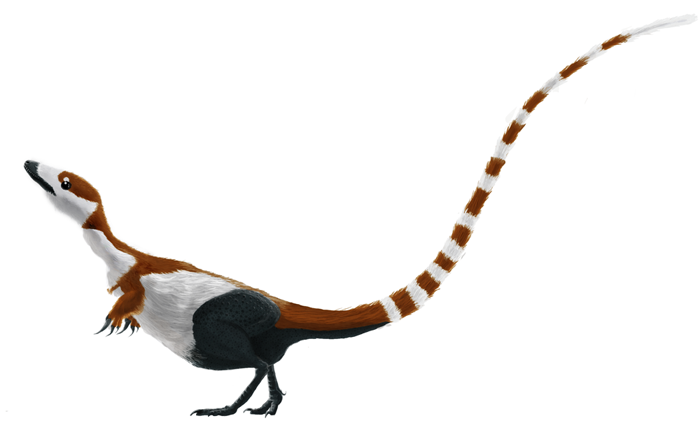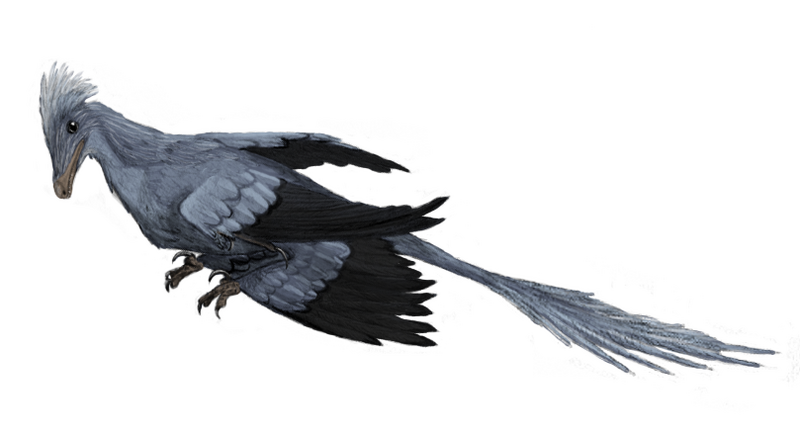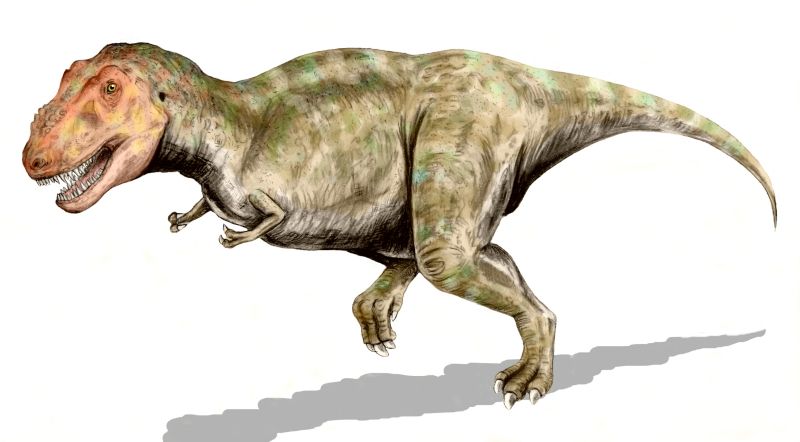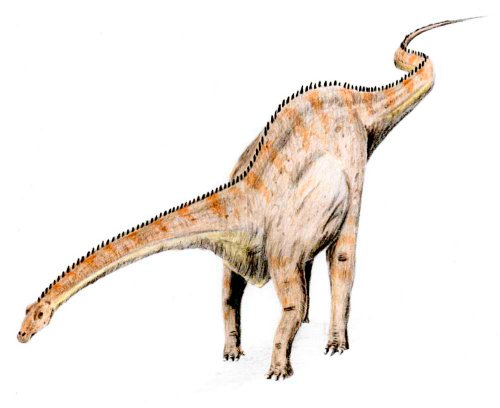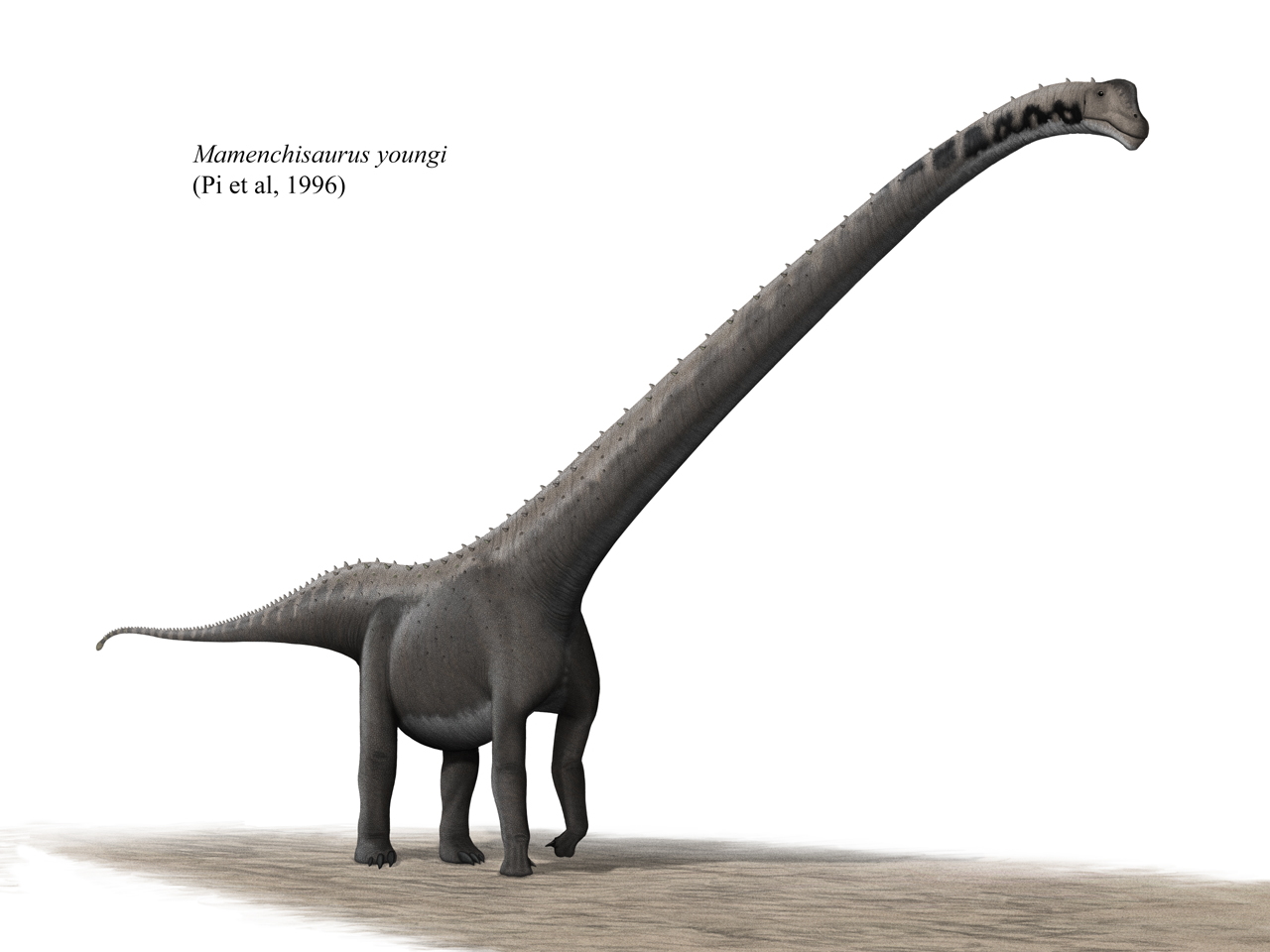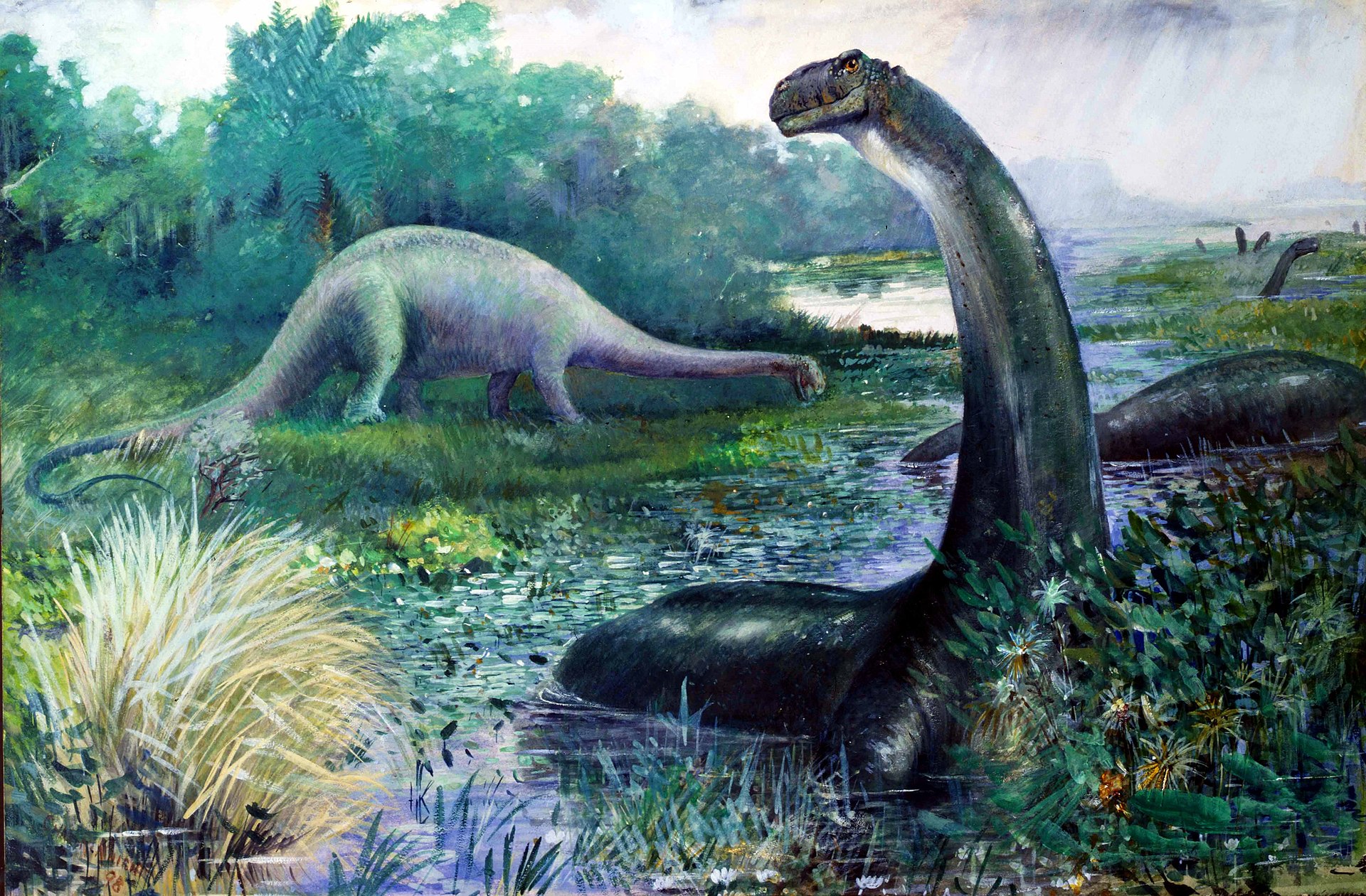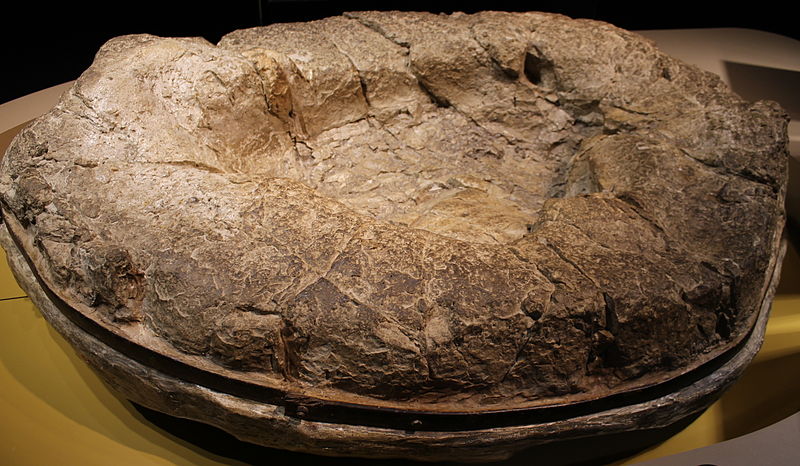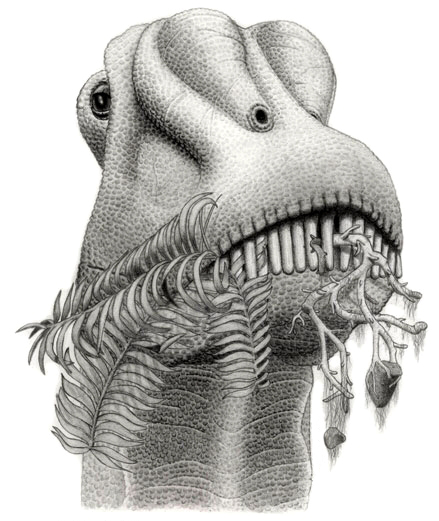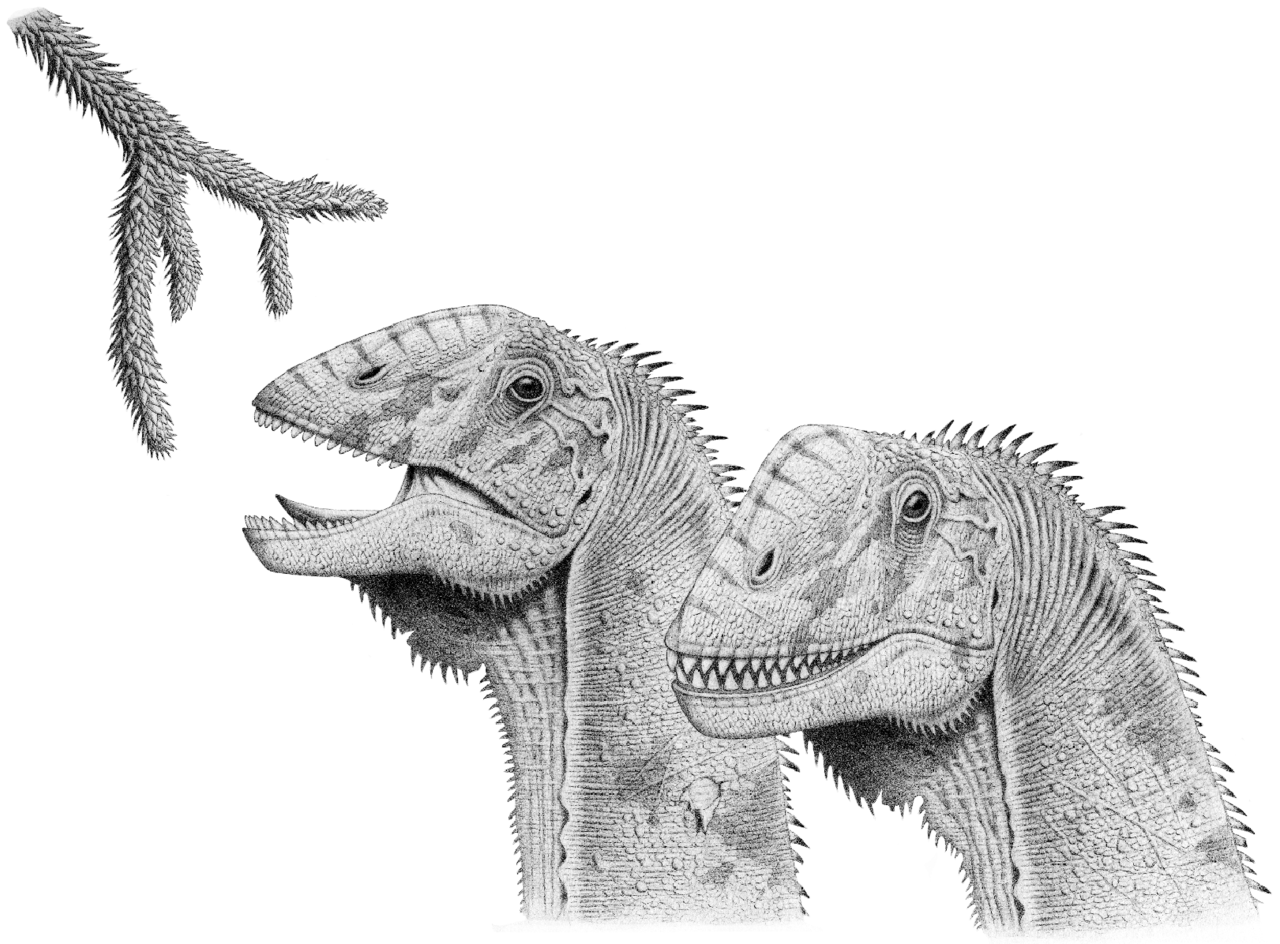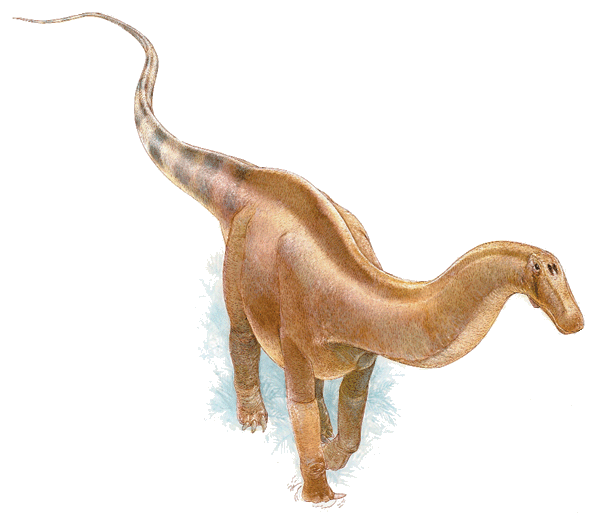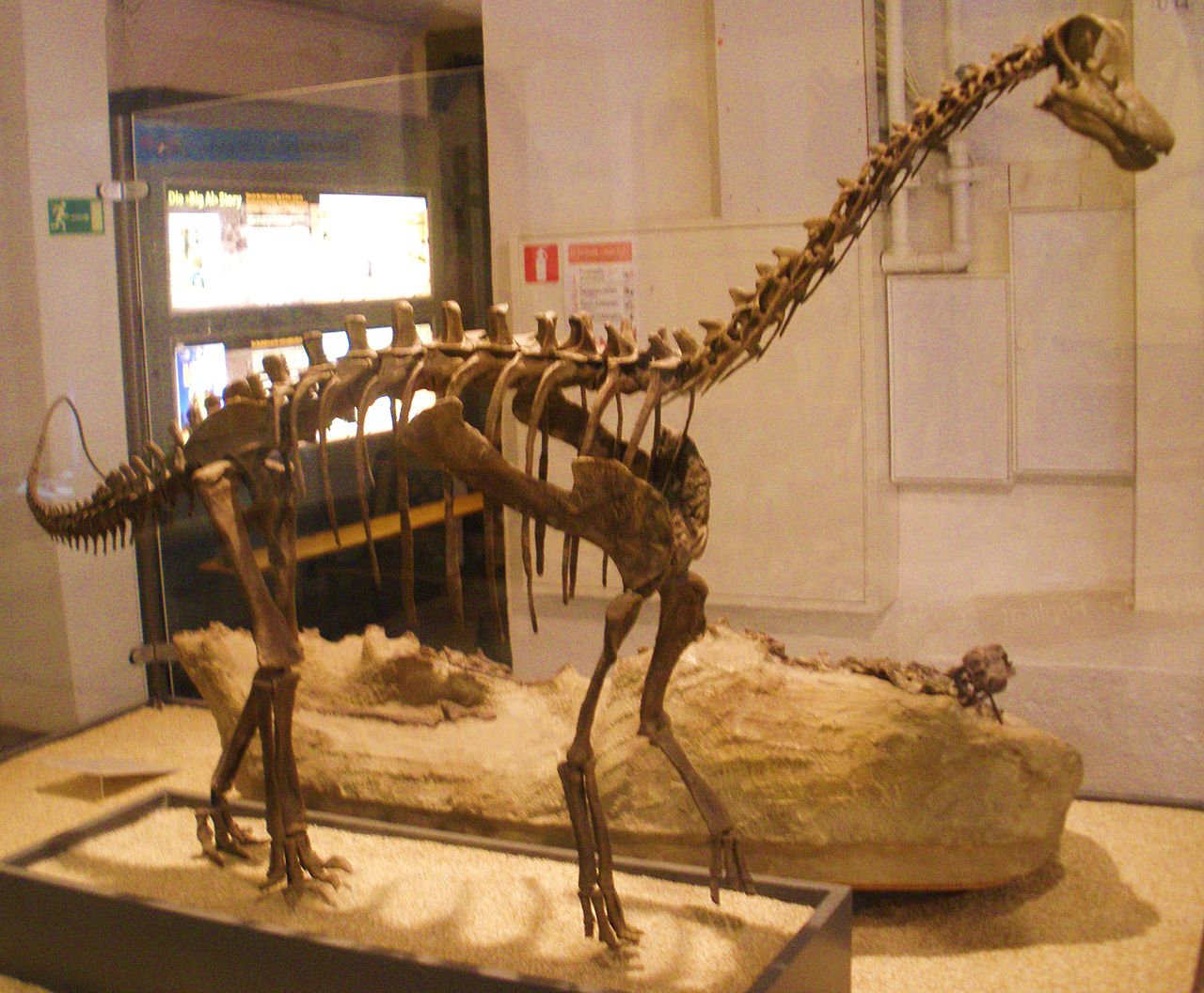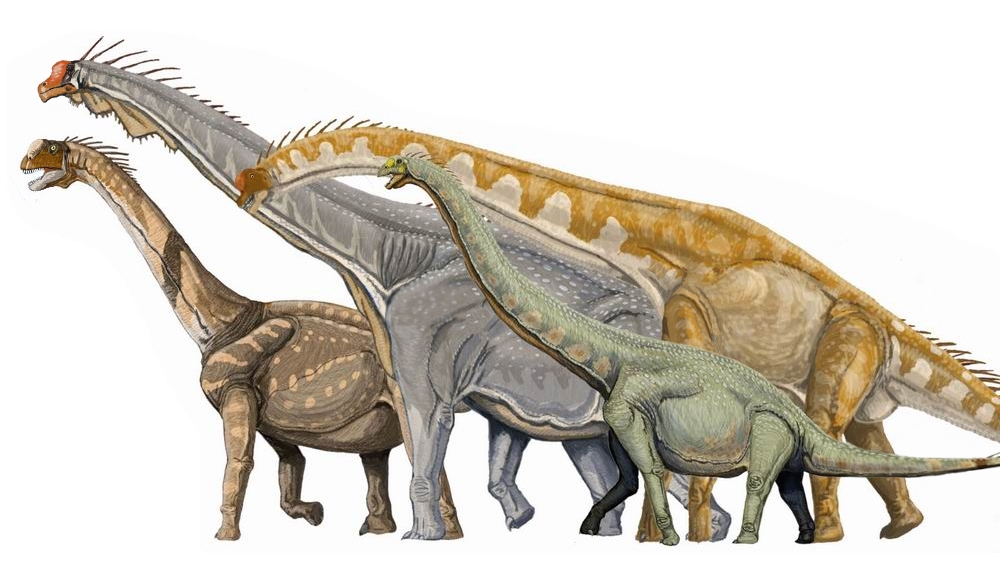I can't believe that this Sunday is Palm Sunday, and the Sunday after that is Easter! How exciting! Our drama,
Victory at the Cross is also this Friday. That should be pretty cool too.
Days till:
It is: 2 days till Palm Sunday
It is: 7 days till
Victory at the Cross
It is: 9 days till Easter Sunday
In the Spotlight:
Not much to share today, but the final
Lego Jurassic World set has just been revealed, and it is called
Raptor Escape. Check it out!
 |
| From this, we know Omar Sy's character's name is "Barry". |
What do you think is happening in this scene?
Topic of the Week by
Christian Ryan
 |
| This photo from 1880 portrays an Archaeopteryx fossil, preserved with feathers. Is this a piece of the "mountains of evidence" for evolution? |
“...99% of scientists accept evolution.”
Dr. Brian Alters
“...paleontologists have uncovered numerous dinosaurs with everything from bristles and fuzz to full-flight feathers—which document the evolution of plumage...creationists deny the
clear fossil record...The mountain of evidence that birds are living dinosaurs...are among the most gorgeous examples of evolutionary change yet found.”
Brian Switek (emphasis mine)
“...[Tiktaalik's] discovery sheds light on a pivotal point in the history of life on earth...”
author of: “Tiktallik.uchicago.edu/meetTik”
“I think Australopithecus sediba is best seen as a compelling example of the highly experimental nature of evolution...around the time of the origin of Homo.”
Rick Potts
“...impenetrable roadblocks [concerning whale evolution] exist only for those that insist upon blinding themselves to the ever-mounting evidence [for it].”
– author of “
Creationist Mindblocks to Whale Evolution”
We hear the same thing repeated over and over again: “Creationists are stupid science-deniers because we have rejected and blinded ourselves to the overwhelming evidence for evolution. Evolution has been proven true, foolish anti-science lovers!” Yeah, I've heard it time and time again. But is the “mountain of evidence” for evolution really a mountain...or just the mirage of a mountain? Since, according to evolutionists, evolution happens far too slow us to see it in action today, evidence for evolution must come from the past, and as we can't directly observe what happened in the past, we can't apply the scientific method (true science) to the theory of evolution. Therefore evolutionists are forced to look at the fossil record, where we can see the long-dead remains of organisms that once lived on this planet.
Evolutionists, such as Brian Switek, insist that creationists deny what can “clearly” be seen in the fossil record. They regard creationists as ignoring the fossil evidence. How much of that is actually true? Has evolution been proven by the fossil record? The ultimate “proof” evolutionists like using to lend evidence to their case is to talk about transitional forms (otherwise known as the “missing links”). What exactly is a transitional form, or fossil? Well, according to the website Understanding Evolution, transitional forms are:
“Fossils or organisms that show intermediate states between an ancestral form and that of its descendants...There are numerous examples of transitional forms in the fossil record, providing an abundance of evidence for change over time.”
Really? How true is that statement? Well, over the years, several transitional fossils have been brought forth as the “overwhelming evidence” for evolution. Today, we are going to look at a few of the most popular and see just how well evolutionary thinking really stands up to the fossil evidence. Resources will be provided at the end of this post so that you may dig into deeper research.
Tiktaalik
 |
| Tiktaalik is supposed to be the missing link between fish and amphibians. |
While far from being the first transitional form ever proposed, I figured this was the best place to start because this creature is one of the “oldest” transitional fossils in the fossil record.
Tiktaalik roseae was a fish that we can find fossilized in the Devonian rock layers, usually dated about 375 million years ago. Growing three to nine feet long, it was discovered in Canada in 2006 and is believed by evolutionists to be the missing link between fish and amphibians.
 |
| This is where Tiktaalik was discovered. |
What is their basis for this? Well, according to the evolutionary scientists,
Tiktaalik had several adaptations for becoming the world's first “fish out of water”. The evidence for this that is presented is its had strong front fins, allegedly used haul itself out of the water and support its weight on land. To many atheists, such as Richard Dawkins,
Tiktaalik was the transitional fossil they'd been looking for that was wonderfully in-between fish and amphibians. In fact, this fish has become so popular that you will often see the “walking fish” symbol on the bumpers of cars, on shirts and other places; there's even a popular song about it! Is all this evolutionary-hype really based on fossil evidence, or is this claim of “
Tiktaalik, the walking fish” having a hard time standing up-and-out of the water under pressure? (Pun intended).
 |
| Was Tiktaalik really the "walking fish", or should that idea just walk right back into the water? (Pun intended) |
What truths can we glean from the fossils of this extraordinary fish? Firstly, Tiktaalik's famous fins are not connected to the main skeleton. So how could it possibly hope to support its body on land? It couldn't! Evolutionists have tried to side-step this glaring problem by claiming that it instead used its fin for propping its body up as it moved across the water bottom. This is a nice story, but it also brings to mind what evolutionists were hoping would be the case in another type of fish called the coelocanth. This idea was based upon only mere fossils of coelocanth. But after the coelocanth was discovered in 1938, scientists found out the truth: coelocanths actually use their fins for steering as they swim and have never been observed using them to walk, even underwater!
 |
| The coelocanth was also once thought to use its fins for walking until the discovery of the living creature in 1938. |
As if this wasn't enough, there's an even larger problem for calling Tiktaalik a transitional fossil. The problem concerns a fossil discovery made in 2010 of a clearly-quadrupedal amphibian trackway. Now, if this trackway had been found in rocks dated, say, 370 million years old, evolutionists would declare it to be magnificent evidence of evolution in action. But that's not the alleged age assigned to those tracks. The actual age is around 384 million years, nine million years before
Tiktaalik came into existence! This means an amphibian was walking about on land before
Tiktaalik (the transitional form between fish and amphibians) came on the scene. Few evolutionists seem to realize this fact. Since you can't be your grandfather's father, one must wonder why
Tiktaalik is still considered proof of evolution.
 |
| The supposed evolution of fish to amphibians. |
When looking at the actual fossil evidence, it looks like
Tiktaalik just stopped (walking), dropped and rolled back into the water, where it was
really designed to live. If
Tiktaalik is considered one of the best proofs of evolution...what can be said for the other “proofs”?
Archaeopteryx and other “Dino-Birds”
.jpg/800px-Archaeopteryx_lithographica_(Berlin_specimen).jpg) |
| Archaeopteryx has long been the poster boy for transitional forms. |
It wasn't long after the discovery of the feathered bird
Archaeopteryx in Germany, 1863, that biologists, including Thomas Huxley brought forth the idea that theropod (specifically maniraptoran) dinosaurs evolved into birds. Now I've already discussed the tremendous problems with the theory in
this article, so I will only briefly discuss some of the issues here.
What is the evidence evolutionists use to insist such a claim? Most of this evidence has come from northeast China. As “evidence”, most evolutionists point to the similarities between maniraptoran dinosaurs and birds. The bird
Archaeopteryx, and the “feathered dinosaurs” such as
Microraptor and
Anchiornis all have characteristics of birds, including feathered wings (
Microraptor had a wing on each limb), and hollow bones, as well as characteristics generally associated with reptiles, such as teeth, fingered wings, bony tails, and no keel. There seems to be two genres of “feathered dinosaurs” that have been discoveries: dinosaurs preserved with what evolutionists call “protofeathers” and creatures with actual feathers, like the ones discussed above. Evolutionists seem to believe the debate upon whether theropods evolved into birds has already been settled; Brian Switek insists, “The mountain of evidence that birds are living dinosaurs...are among the most gorgeous examples of evolutionary change yet found”. But is this claim really just another feathery flight of fantasy?
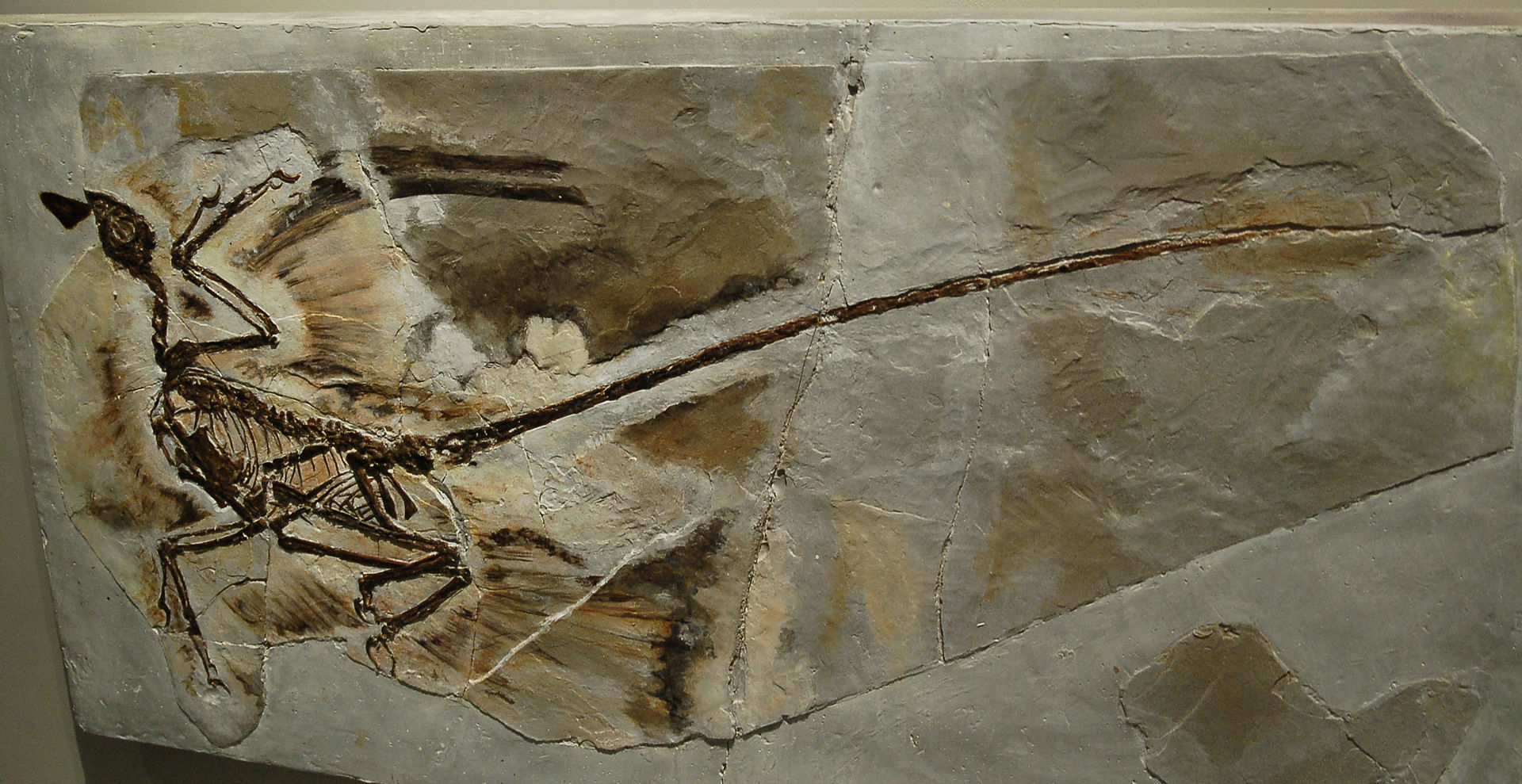 |
| Microraptor is allegedly a feathered dinosaur from China. |
Despite all the hype about evidence for “feathered dinosaurs”, there is good reason to consider this claim based more upon wishful-thinking rather than on fossil evidence. For example, several scientists actually disagree with the common deduction that several “feathered” dinosaurs were actually feathered. Ornithologist (and evolutionist) Alan Feduccia deduces that the “protofeathers” on dinosaurs like
Sinosauropteryx are nothing more than decayed parts of the dinosaur's skin called collagen fibres. Similar structures to the ones on
Sinosauropteryx and other dinosaurs have been discovered on fossils of pterosaurs, ichthyosaurs, dinosaurs held to be unrelated to birds (e.g.
Tianyulong confuciusi) and even a dead dolphin! So in summary, dinosaurs with “protofeathers” have most likely just been preserved with frayed collagen fibres.
 |
| This Sinosauropteryx is a close relative to Compsognathus, a small dinosaur found in Europe. |
What about creatures with actual feathers (e.g.
Microraptor,
Archaeopteryx and
Caudipteryx)? Some creationists have suggested these are dinosaurs with collagen fibres, but the structures seen on these animals are quite different from the alleged “protofeathers” seen on dinosaurs like
Sinornithosaurus. Instead, these are clearly actual feathers. Many evolutionists consider
Caudipteryx,
Microraptor, and fairly recently,
Archaeopteryx, nothing more than feathered dinosaurs. Is there a problem with this belief? You bet there is! After conducting a sophisticated analysis of such creatures, scientists such as Alan Feduccia (among others), concluded that “dinosaurs” with actual feathers are actually birds and not related to reptiles in the slightest. The bird-like characteristics clearly indicate they are birds; one such characteristic is the teeth of both
Microraptor and
Anchiornis which were bird teeth, not dinosaur teeth.
 |
| Caudipteryx and other feathered "dinosaurs" were actually birds. Caudipteryx itself was likely flightless. |
Another large problem is the order of the fossils in the fossil record. If dinosaurs evolved into birds, one should expect to find a transition, like the alleged ones we often see depicting
Australopithecus-to-man or
Hyracotherium-to-
Equus. But let's look at this a little more closely, shall we? Creatures like
Archaeopteryx (which, until recently, was thee transitional form between dinosaur and birds), with fully-functional modern-like feathers, has been found in rock layers usually dated 150-148 million years old. So in layers below and therefore older than the ones possessing
Archaeopteryx fossils, we should expect to find feathered dinosaurs, and in layers above and younger we should find more modern birds...right? That's not what we find in the fossil record! One of the deepest-buried creature with confirmed feathers we've found so far is
Pedopenna, said to have lived 164 million years ago. This is an astounding 14 million years before
Archaeopteryx! This also means, according to the theory of evolution, that feathers would had to have already evolved prior to 164 million years ago, and to date, most dinosaurs with “protofeathers” have been discovered in lower Cretaceous sediments, several tens of millions of years after feathers had evolved.
 |
| Thanks to findings of fossilized color pigments, we have evidence that Microraptor was at least partially black in color. |
As I discussed in my previous article about dinosaur-to-bird evolution, the evidence for this claim is all but lacking.
Hyracotherium and the Equus
 |
| Horse evolution is clearly seen in the fossil record...or is it? |
The evolution of the horse is one of the classic examples of “proof” for evolution. Several extinct species of horses have been discovered over the past century or so and evolutionists have used them to create a lineage. The tiny, dog-sized
Hyracotherium, a creature not actually related to the horse, is at the beginning of the evolutionary line. Evolutionists believe horse evolution was driven primarily of the habitat change – as the climate became less forested, drier and more open/plains-like, the horse evolved larger, lost its original number of toes and over a period of millions of years, it evolved into
Equus: the modern horse.
 |
| Hyracotherium is supposed to be the first phase of horse evolution. |
Once again, I will demonstrate the glaring problems with this idea. Firstly, evolutionists believe horses lost their toes as they evolved larger and more adapted to life on the open plains:
Hyracotherium and other early horses (the “slightly more evolved”
Eohippus) had four toes in the front and three toes in the back.
Equus has only one toe on each foot. So, evolutionists present us with the evolutionary lineage of the horse:
Hyracotherium,
Eohippus,
Orohippus,
Epihippus,
Mesohippus,
Miohippus,
Parahippus,
Merychippus,
Pliohippus and finally
Equus. Is this evolution in action? Or were the scientists who originally proposed this theory unknowingly horsing around?
 |
| This is the skull of Pliohippus. |
Unfortunately for evolutionary thinkers, the problems with this evolutionary line are as alarming as a herd of galloping horses. If the horse sequence were correct, you would expect
Hyracotherium to be found beneath rock layers containing
Eohippus, which would be beneath
Orohippus, which is underneath
Epihippus...etc. In other words, you would except to see these horses getting larger and loosing toes the higher you go up the geologic rock layers. This is anything but the case. In fact, many of these horses are actually seen to be living at the same time (according to the evolutionists'!). For example,
Hyracotherium,
Eohippus and
Orohippus lived at the same time as
Epihippus!
Mesohippus and
Miohippus appear in the fossil record as the same time as
Merychippus and
Parahipus. It is interesting to note that, save a few exceptions, most of the other horses I mentioned (
Parahippus,
Merychippus,
Pliohippus,
Equus and possibly
Miohippus) all coexisted at same time! To make matters worse,
Hyracotherium fossils have been discovered in Pliocene rock layers, when most of their fossils are found in those of the Eocene. These Pliocene
Hyracotherium fossils are usually considered to have been uncovered and reburied in Pliocene sediments by evolutionists, even though there is no sign of them being redeposited.
 |
| Hyracotherium wasn't even a species of horse! |
Whales
 |
| Whale evolution is commonly regarded as the best evidence for evolution. |
Up until fairly recently, creationists pointed out that evolutionists had no answer for the question of how whales evolved. Over the past few decades, fossil discoveries have allowed evolutionists to (attempt) to fight back. In fact, the evolution of the whales is claimed to be one of the best examples of evolution in action. Evolutionists believe whales evolved from land mammals such as the
Pakicetus. Over a period of around 9-15 million years, it evolved into a semi-aquatic creature and eventually into a fully-aquatic one that we call the whale. The lineage of land mammal to whale, according to this website, goes something like this:
Pakicetus (land mammal),
Ambulocetus (semi-aquatic mammal),
Kutchicetus (semi-aquatic),
Rodhocetus (semi-aquatic) and
Dorudon and
Basilosaurus (both fully-aquatic).
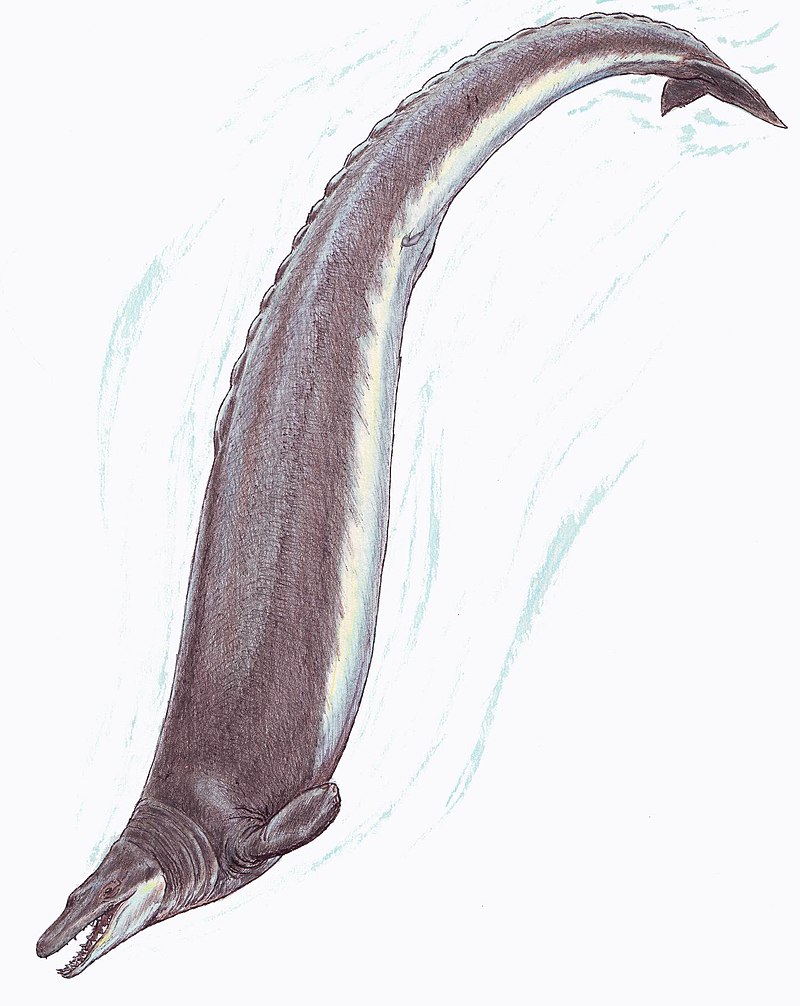 |
| Did whales like Basilosaurus really evolve from small, furry, land mammals? |
Have evolutionists really proven their case against creationists? Is the theory of whale evolution really as clear-cut at evolutionists want us to think? Or is this another whale-of-a-tale? Well, let's use some logic. In order for a land mammal like
Pakicetus to evolve thrive as an aquatic mammal like
Basilosaurus, several changes would have to occur. Whales have:
- Enormous lungs that can hold their breath for a very long time
- A powerful, horizontal tail fluke
- Eyes that can see with great clarity underwater and can withstand high pressure
- Ears for hearing underwater and with an eardrum protected from high pressure
- Nostrils on top of the head
Now, evolution is propelled forward by chance-random processes – primarily gene mutations and natural selection. Therefore, whale evolution is depending upon new genetic information for tail flukes, a blowhole and other aquatic-adaptations to come about by pure accident. This
Creation Ministries International's article sums up the problems with this idea pretty well:
“One thing to note [about whale evolution] is the lack of time for the vast number of changes to occur by mutation and [natural] selection. If mutation results in a new gene, for this new gene to replace the old gene in a population, the individuals carrying the old gene must be eliminated, and this take time. Population genetics calculations suggest that in 5 million years (one million years longer than the alleged time between
Ambulocetus and
Rodhocetus), animals with generation lines of about ten years (typical of whales) could substitute no more than 1,700 mutations. This is not nearly enough to generate new information that whales need for aquatic life, even assuming that all the hypothetical information-adding mutations required for this could somehow arise.”
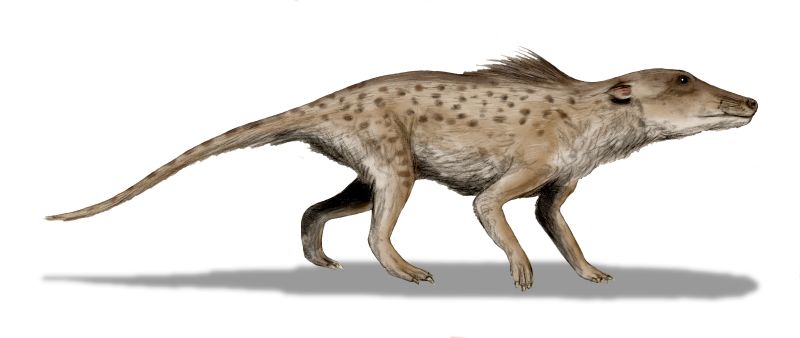 |
| Pakicetus was a small wolf-like animal. |
So what about the whale evolution sequence itself? Let's start at the best place to start – the beginning. Even though initially thought to be semi-aquatic,
Pakicetus shows no adaptations to living a semi-aquatic lifestyle. In fact, it is clearly terrestrial and the only feature that associates it to whales is mainly the structure of a bone called the auditory bulla.
Ambulocetus, the next creature in the sequence. The skeleton of this beautifully-designed mammal was rather incomplete, so many of those so-called whale-like features claimed as evidence that
Ambulocetus was a whale-ancestor have not been found, including the hip bones. It has been claimed that it had an inner ear structure much like that of a modern whale, but this is really not the case; they are quite different in design. In addition to this,
Ambulocetus fossils have been found in rock layers above actual, undisputed aquatic whales.
 |
| Ambulocetus might have been semi-aquatic, but it was no whale-in-the-making! |
Problems don't stop here –
Rodhocetus has often been portrayed as a semi-aquatic creature, complete with flippered-feeth and a tail fluke – a creature evolving into a marine mammal. But as with
Ambulocetus,
Rodhocetus remains that have been found are far from complete. In fact, no tail fossils were found; thus, there is no evidence for a tail fluke. Now foot bones have been found since the initial discovery, but when asked about how it is known
Rodhocetus had flippered feet, this animal's discoverer, Dr. Philip Gingerich is quoted for saying, “Since then we have found the forelimbs, the hands, and the front arms of
Rodhocetus, and we understand that it doesn't have the kind of arms that can spread out like flippers on whales”. So in summary,
Rodhocetus lacked the two features that “proved” it was evolving into an aquatic beast were not present. Finally, we reach fully-aquatic creatures like
Dorodon and
Basilosaurus. These animals are considered to be whale ancestors mainly because they possess tiny rear leg bones. Evolutionists believe that this is because these creatures were slowly “evolving away” these features. But these legs were so small that they were useless for walking; instead, they were probably used to clasp onto the other sexual partner during copulation.
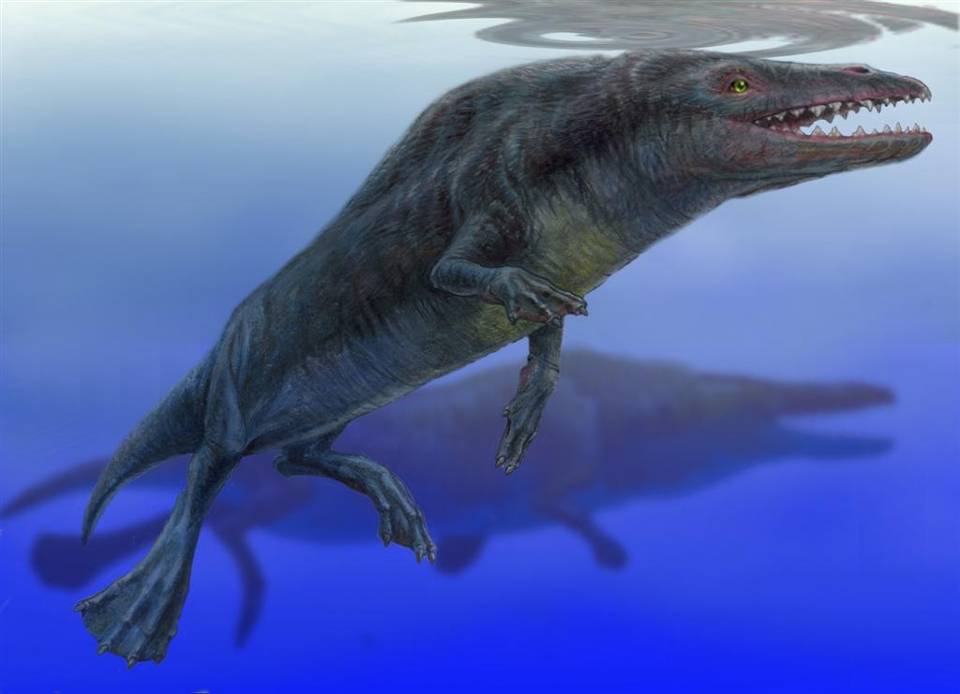 |
| Rodhocetus is an early whale...I'm totally convinced! Yeah, right. |
In summary, evidence for whale evolution has been formed primarily upon incomplete fossil discoveries and lots of speculation. Hm...if this is the best-yet evidence for evolution, evolutionists might want to consider re-thinking their theory.
 |
| Basilosaurus and other whales were designed for life in the ocean. |
Australopithecus and Mankind
 |
| Australopithecus is supposed to be the missing link between ape and mankind. |
No compilation of alleged transitional forms would be complete without bringing up the so-called evidence for evolution of man from apes. To clear up any confusion, evolutionists do not believe humans evolved from chimpanzees (so using the “if we evolved from chimps, why are there still chimps today?” argument is a bad idea). Evolutionists actually believed we evolved from apes that lived roughly 3 million years ago in Africa called Australopithecus, that swung down from the trees, the ancestral home of primates and evolved the ability to walk upright; later, apes increased brain size and developed a taste for meat. As with the whale evolution sequence, there is also claimed to be a clear-cut sequence from apes to humans that goes something like this:
Ardipithecus,
Australopithecus,
Homo habilis,
Homo erectus,
Homo antecessor,
Homo heidelbergensis and
Homo sapiens, our own species. (contrary to popular belief, neanderthals are considered to be a sister or cousin species of
Homo sapiens, by both evolutionists and creationists, not an ancestor).
 |
| Evolutionists often emphasize human features on fossil apes to make them more human, ignoring the loads of ape-like features. |
How does the story stack up to the evidence? Well, much of this evolutionary story hinges the belief that apes such as
Australopithecus could walk upright, like humans. As we can't observe an
Australopithecus take a bipedal stroll, we must look at the fossil evidence. One of the initial “evidences” evolutionists used to “prove”
Australopithecus walked upright was the knee joint, supposedly human-like in structure. However, there is much evidence to suggest that
Australopithecus is really just a knuckle-walking ape. After conducting scientific studies on Australopithecus fossils, several scientists have noticed that much of its skeleton was very ape-like, especially its long, curved fingers and toes (they were even more long and curved than a chimpanzee, a very arboreal ape) and the skull, which lacks the bony ridge found in the human nose, but not in apes. Even the hand and fingers themselves were very much like a knuckle-walking ape. Granted, there are several differences from Australopithecus and most modern knuckle-walking apes, but it appears that this species was merely a unique species of ape designed for a unique lifestyle. Also, there is evidence for bipedal walking in species allegedly more human-like and that lived earlier than
Australopithecus, such as
Orrorin tugenensis.
 |
| The Laetoli footprints were made by a human being living at the same time as Australopithecus. |
What about other members of the
Homo genus, such as
Homo erectus? Are these “ape-men” in the process of evolving? Not at all! Despite initial beliefs, the members of the
Homo genus (e.g.
erectus, neanderthals and
Cro-magnon) I mentioned two paragraphs ago are just humans. Just like us, they were capable of making fire, hunting and butchering tools, and quite likely even seafaring vessels. They also buried their dead. No primitive “ape-man” brute can do all that! Not only that, but despite the fact that there are similarities present, ape fossils and human fossils are quite easy to tell apart in the fossil record.
 |
| Neanderthals, cro-magnon and Homo erectus were just ancient people! |
Summary
This article doesn't cover nearly a quarter of the information proposed in evolutionary internet articles, books and other sources. Evolutionist claims will continue to pop up on a regular basis. However, as creationists, I urge you to take them all with a pinch of salt, because they are never as solid as they seem on the outside. As I continue to research more and more about these “transitional forms”, I realize a pattern emerges: most transitional forms are proclaimed loud and clear as the latest evidence for evolution based upon fragmentary and speculative evidence. Then, after the hype dies down, a few years pass until 1) new fossil discoveries reveal this “transitional fossil” can't really be what it was originally claimed to be or 2) another fossil of a transitional form will override the previous discovery. It happens almost every single time! If proof of evolution in the fossil record is so apparent, why must they keep switching out transitional fossils for other, “better” ones? Is it possible that they don't exist at all?
Of course, in light of several of the issues with “transitional fossils” I've displayed, some evolutionists will argue that the fossil record is incomplete, so we shouldn't expect to find every fossil in the right sequence. That's true, but compared to all the “complete” creatures we've discovered, the number of “transitionals”, all of which are controversial, even among evolutionists. If evolution were true, we should expect even more transitional fossils than we do complete ones!
So what of these creatures with features that are usually used as “proof” that they are transitional? Don't these similarities mean they are related to each other? Not at all! Think about the duck-billed platypus, a mammal that lays eggs and has a beak like a duck and webbed feet and flattened tail like a beaver. It has features of several different kinds of animals, just like
Archaeopteryx,
Tiktaalik,
Australopithecus and
Ambulocetus. But no one suggests the platypus is related to ducks or beavers. The best way to describe such creatures is to refer to them as “mosaics”. This is exactly what we expect to find in light of Genesis 1:21 and Genesis 1:25:
“So God created the great creatures of the sea and every living thing with which the water teems and that moves about in it, according to their kinds, and every winged bird according to its kind. And God saw that it was good.” Genesis 1:21.
“God made the wild animals according to their kinds, the livestock according to their kinds, and all the creatures that move along the ground according to their kinds. And God saw that it was good.” Genesis 1:25.
As you can see, God created all the different “kinds” (usually referring to the “family” level of classification rather than “species” or “genus”) of creatures to reproduce after their own kind; in other words, all other creatures that descended from these “created kinds” were of the same “kind” of animal. Animals were not supposed to change from one kind into a completely different kind, and this is just what we see today and in the fossil record. Therefore, creatures with features similar to other kinds of animals don't show evolution, but rather, the creativity of God, our Creator.
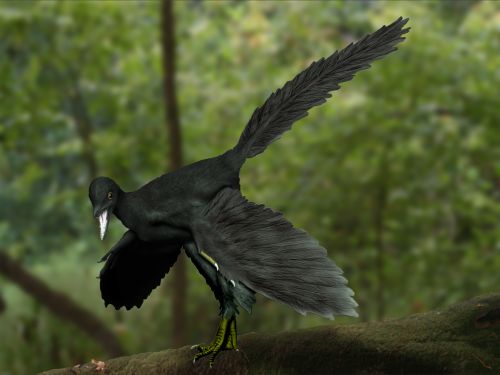 |
| Archaeopteryx and other "transitional fossils" were really just mosaics rather than transitional. |
References:
www.evolution.berkeley.edu/evolibrary/article/lines_03
www.transitionalfossils.com
www.creation.com/tiktaalik-roseae-a-fishy-missing-link
www.answersingenesis.org/missing-links/is-tiktaalik-evolutions-greatest-missing-link
www.wikipedia.org/wiki/archaeopteryx
www.creation.com/bird-evolution
www.creation.com/the-evolution-of-the-horse
www.answersingenesis.org/fossils/transitional-fossils/another-whale-of-a-tale-creationists-without-a-whimper
www.creation.com/refuting-evolution-chapter-5-whale-evolution
www.creation.com/rodhocetus
www.creation.com/did-lucy-walk-upright
www.answersingenesis.org/human-evolution/cavemen/who-were-cavemen
Disclaimer: Many (or in some cases all) of the photographs and images above are not mine. If you own one or more of them and would like them to be removed, politely let me know via my email address.







.jpg/800px-Archaeopteryx_lithographica_(Berlin_specimen).jpg)




















